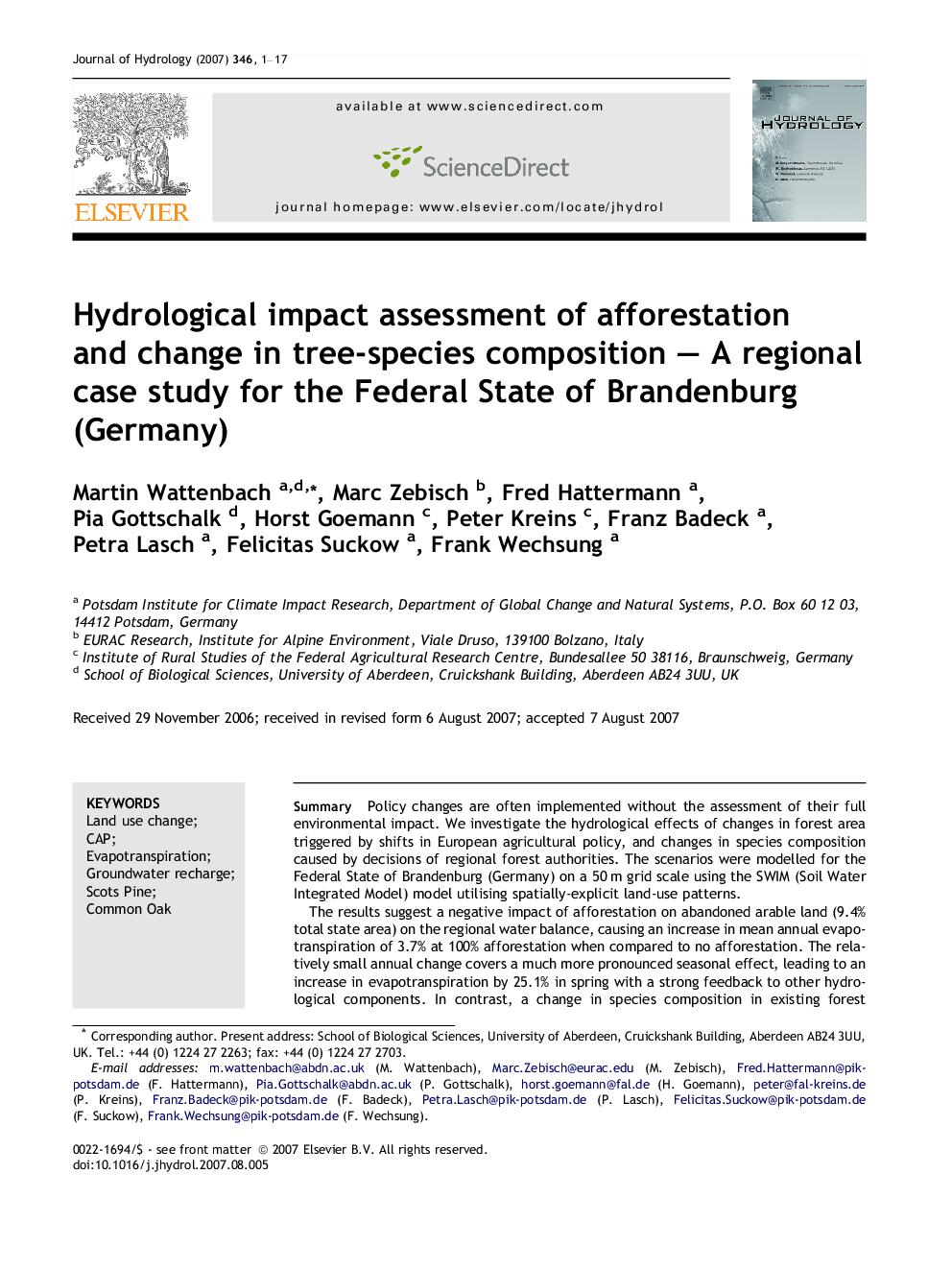| Article ID | Journal | Published Year | Pages | File Type |
|---|---|---|---|---|
| 4579726 | Journal of Hydrology | 2007 | 17 Pages |
SummaryPolicy changes are often implemented without the assessment of their full environmental impact. We investigate the hydrological effects of changes in forest area triggered by shifts in European agricultural policy, and changes in species composition caused by decisions of regional forest authorities. The scenarios were modelled for the Federal State of Brandenburg (Germany) on a 50 m grid scale using the SWIM (Soil Water Integrated Model) model utilising spatially-explicit land-use patterns.The results suggest a negative impact of afforestation on abandoned arable land (9.4% total state area) on the regional water balance, causing an increase in mean annual evapotranspiration of 3.7% at 100% afforestation when compared to no afforestation. The relatively small annual change covers a much more pronounced seasonal effect, leading to an increase in evapotranspiration by 25.1% in spring with a strong feedback to other hydrological components. In contrast, a change in species composition in existing forest (29.2% total state area) from predominantly Scots Pine to Common Oak decreased the evapotranspiration by 3.4%, accompanied by a much weaker but apparent seasonal pattern. The changes show a high spatial heterogeneity that is masked by a linear mean response for the total state area.
